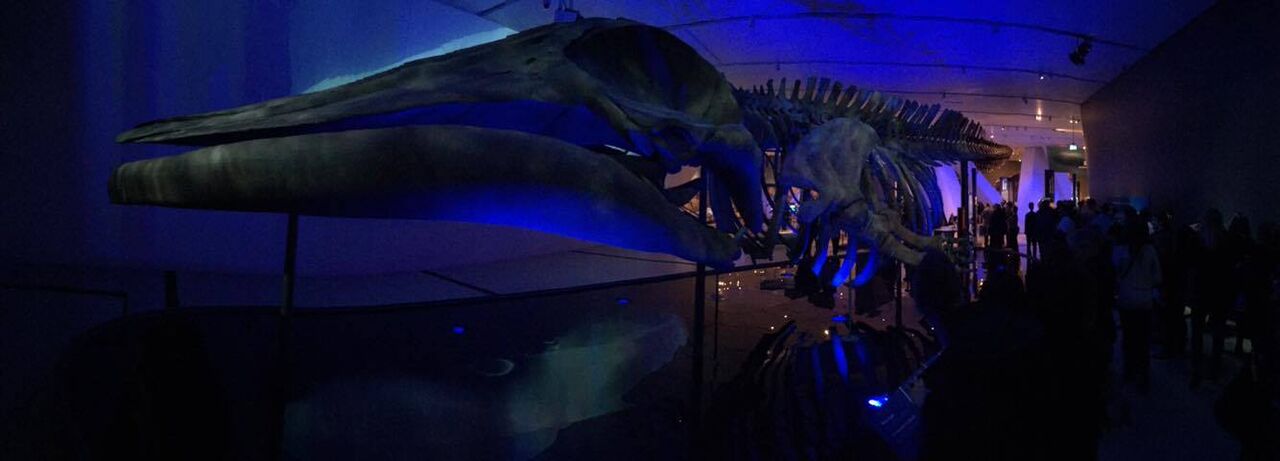“Out of the Depths: The Blue Whale Story” at the ROM
Laina Southgate STAFF WRITER
The ROM’s most recent exhibit, “Out of the Depths: The Blue Whale Story,” is a multimedia exploration of blue whales. What originated as a tragedy when nine blue whales were trapped in ice and died off the coast of Newfoundland in 2014 became a rare opportunity for research on the elusive mammals. Blue whales normally sink when they die, but the ice provided an unusual situation in which the whales could be salvaged, and thus provided the Department of Fisheries and Oceans, Research Casting International, local communities, and ROM scientists a chance to recover the skeletons and transport them to Ontario.
The exhibit itself is educational, immersive, and fun to experience. The first thing one will encounter when they enter is a timeline of events and three massive screens showing footage of the scientists talking about the tragedy of the event as well as the best methods for defleshing the whales and talking about the processes used to preserve the skeletons. Around the next corner, however, is the most exciting aspect of the exhibit: the eighty-foot long skeleton of the whale that scientists have named Blue.
The skeleton is massive, and surrounding it are different interactive activities one can do in order to learn more about blue whales. There is a scale to see how many of you are needed to weigh as much as Blue, as well as a competition to see how long you can hold your breath to see if you can match up to the blue whale’s impressive ability; it can hold its breath for at least thirty minutes. There is also a photo opportunity, in which you can dress up as krill and stand in the skeleton of a Blue whale’s mouth–an interesting fact I learned here is that blue whales couldn’t swallow a human even if they tried as their throat is less than one foot wide!
Perhaps one of the most interesting aspects of the exhibit is a room in which one can listen to blue whales ‘sing.’ The catch here is that the song of the blue whale is so low that human ears cannot hear it, thus what the listener hears is more of long pulses and vibrations. The room is enclosed, and the low whale song feels more as a wave of vibration rather than actual song, and on display were two different patterns: a slow one that was drawn out and a faster one which had more pulses.
What is deeply troubling about the death of nine blue whales is it represents three percent of the entire blue whale population, thus it is important to acknowledge that the exhibit treats the whales with respect. Their deaths, while tragic, provide a rare opportunity to study blue whales which offer conservation efforts more information on how to best help the giant mammals. The exhibit is one of the best exhibits the ROM has had to date, and is on display until September fourth.



